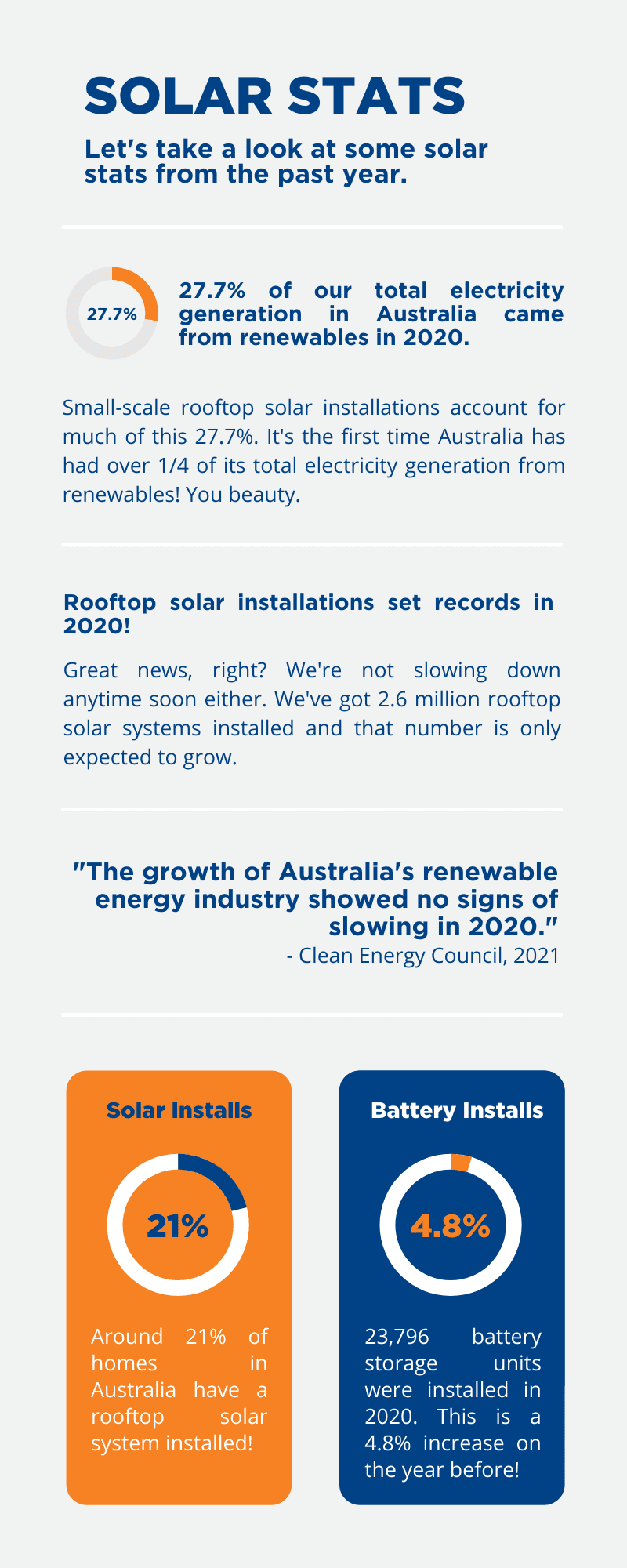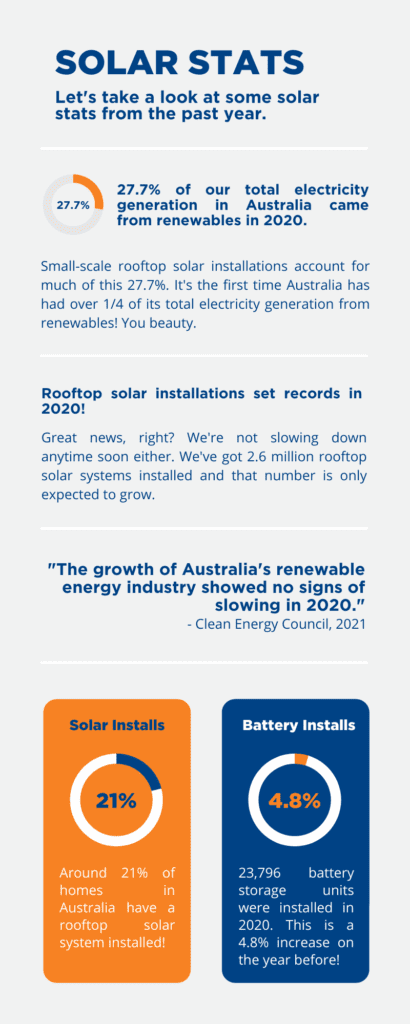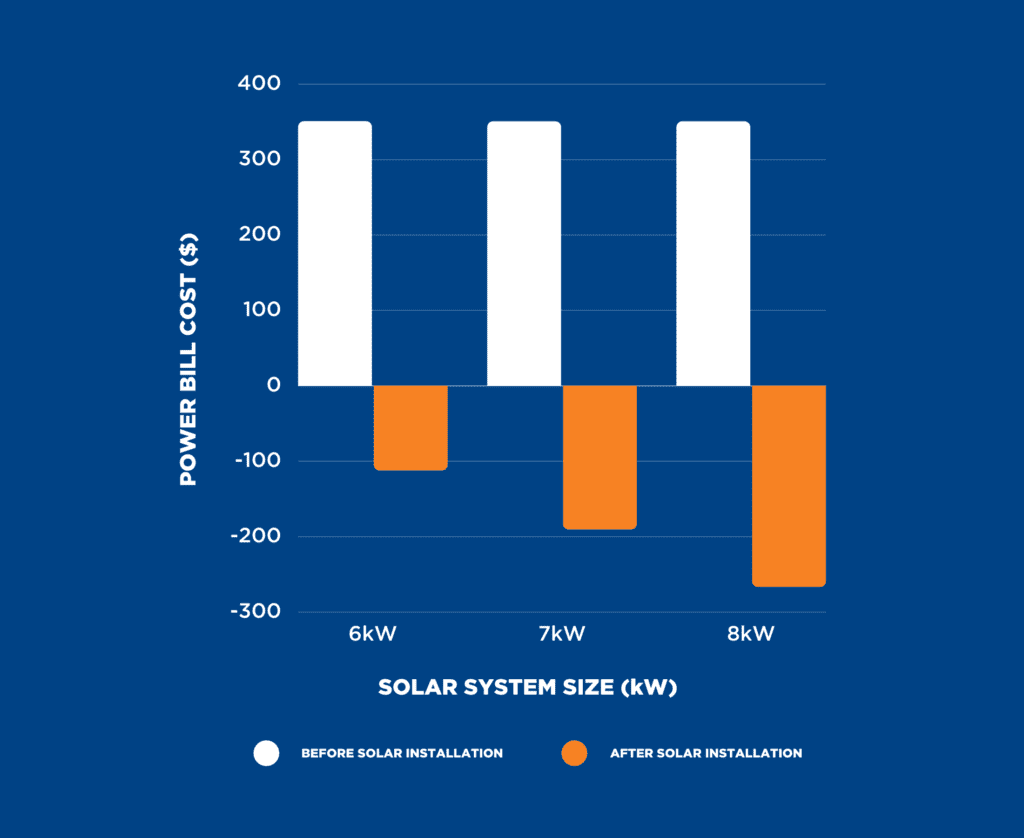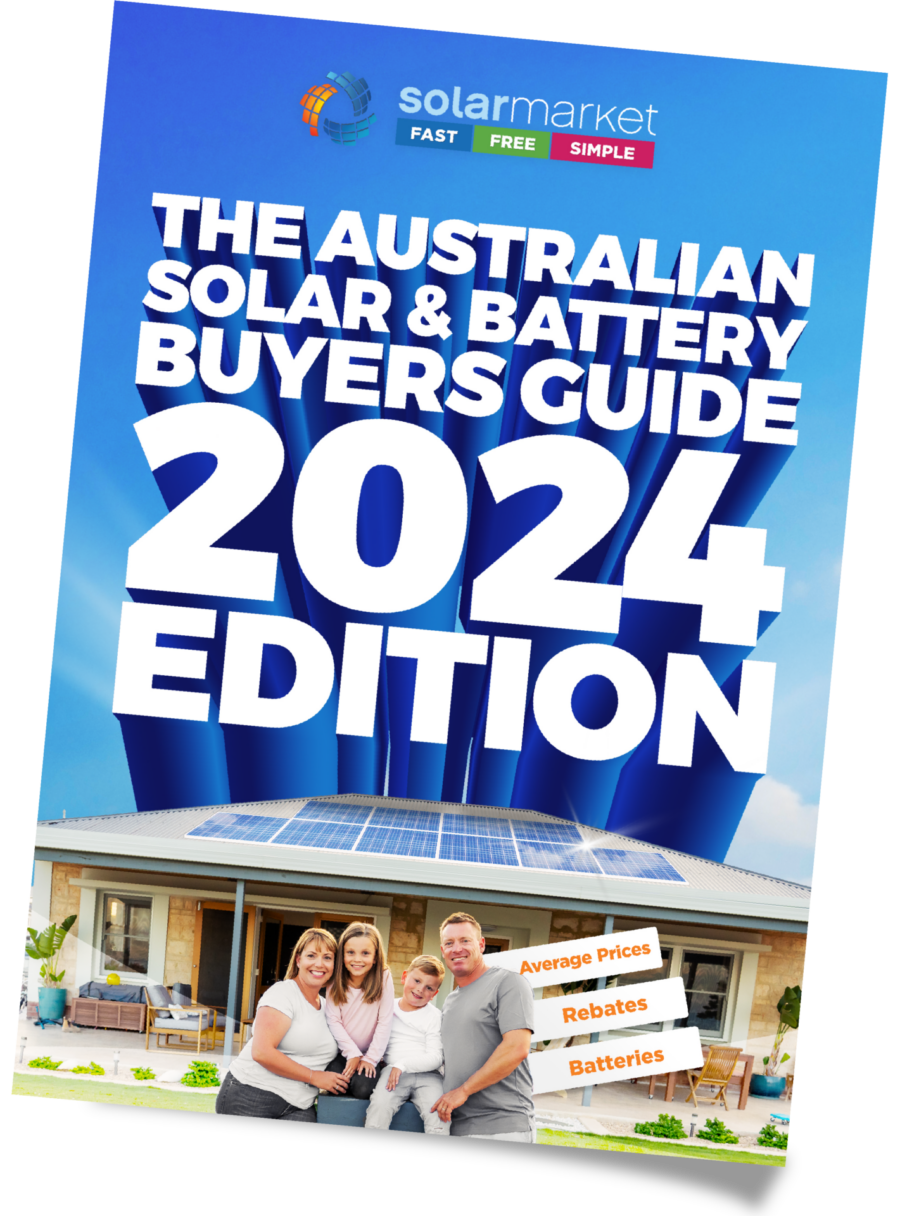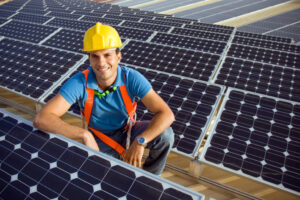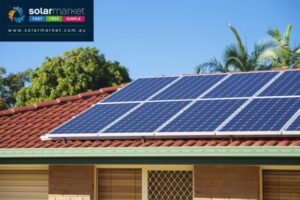Have you asked yourself how much you could save with solar? If you answered yes, you’re not alone. If you answered no, you’re about to find out why it’s something you should be asking! Us Aussies are spending more time at home than ever before, so energy usage and power bills are getting higher.
Let’s get into some stats!
According to the Clean Energy Council, over a quarter of our total electricity in Australia came from renewable energy! Furthermore, it’s the first time we’ve reached that milestone as a country. This was an increase on 2019 and much of this can be attributed to small-scale solar. Small-scale solar includes households and small businesses. Additionally, rooftop solar installations set new records in 2020 and shows absolutely no signs of slowing down in the years to come. In total, as of the end of December 2020, there are more than 2.6 million rooftop solar systems installed.
Along with a rise in popularity for small-scale solar, we saw an increase in battery storage installations compared to 2019! Looks like Aussies are super keen on storing solar energy to save even more on power bills (and we’re all in the same boat on that one). Solahart, a leading Australian solar manufacturer, recently released their latest index report. The report showed that on a global scale, Australia has the highest uptake of rooftop solar, with over 21% of homes having a system installed.
So, it’s a lot of information to take in, but the theme here is that rooftop solar in Australia is only getting more popular. While we have over 2.6 million systems installed, there’s so much more where that came from.
Show me the money!
The exact amount of money you could be saving with solar differs. A bunch of things come into play here; your state and city, the size of your chosen solar system, how much you currently pay for electricity and the amount you could be eligible for in terms of rebates. Luckily, we’ve come to the rescue with our solar savings calculator. You can punch in those details for an instant estimate! You can even get a detailed report sent to your email. What more could you want?
But… you came here for answers and that’s what we’ll give you. According to the Australian Energy Council, the most common solar system sizes by installation in Australia fall within the bracket of 6.5kW to 9.5kW. One of the most common sizes within this bracket is a 6.6kW solar system. We’ll break down what your savings could be based on a 6kW, 7kW and 8kW system to give you an idea for savings on each size. The estimates will be based on living in Sydney (the most populated city in our beautiful country), with a bi-monthly power bill from Origin Energy of $350.
As you can see below, the bill before installing solar is at $350, whereas after installing, the bill drops into the negatives… which means you make money back! From our point-of-view, it’s a no-brainer!
For a 6kW system, you could*:
- Get rebates of up to $2,405;
- Pay it off in less than 2.5 years and;
- Save up to $33,104 in 10 years.
For a 7kW system, you could*:
- Get rebates of up to $2,805;
- Pay it off in less than 2.5 years and;
- Save up to $38,623 in 10 years.
For an 8kW system, you could*:
- Get rebates of up to $3,206;
- Pay it off in 2.5 years and;
- Save up to $44,141 in 10 years.
In conclusion…
We’ve looked at some statistics on solar in Australia, which has hopefully given you a good outlook as to the increased popularity of rooftop solar installations! Combined with the savings you could see when you install, jump on board the solar train and be part of the movement this year.
In the meantime, if you’re reading this and waiting to have panels installed (or you already have panels installed), we’ll look after you. Check out ways you could be saving with solar in a completely different way (being that you’ve already got it… or getting it)! We’ve got some simple energy saving tips on our social media channels and webpages
